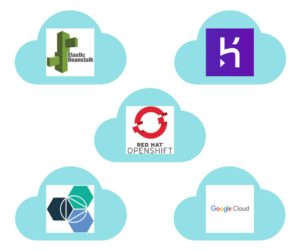Blink: Chrome’s New Rendering Engine
In a surprise statement released last week Google announced that Chrome and Chromium are to adopt a new rendering engine named ‘Blink’. Blink is a fork of Webkit introduced because:
- Chrome uses a different multi-process architecture to other Webkit browsers
- It provides Google with further performance improvement opportunities.
Blink’s mission is to improve the open web through technical innovation and good citizenship.
We believe that having multiple rendering engines — similar to having multiple browsers — will spur innovation and over time improve the health of the entire open web ecosystem.
All very noble. But was Google’s decision politically motivated? Webkit is open source; there are no technical reasons why Google couldn’t implement improvements. However, Webkit is largely controlled by Apple — a competitor. At best, Safari would have the same technologies. At worst, Apple could block features which offered Google a competitive advantage (such as Dart).
Regardless of the reasons, Blink is good for the web.
Webkit has never been a single rendering engine so another fork will have little immediate impact. Over time, Blink will proceed along a different path unencumbered by Webkit stakeholders. The engine will be one of Google’s top priorities and should evolve rapidly.
Blink will appear in Chrome 28 and also be adopted by other browsers based on Chromium — including the new version of Opera and RockMelt. We may have lost Presto, but Blink goes some way to redress the balance. The web has four major rendering engines once more — even if two will be mostly identical for a few months.
Will There be a New Vendor Prefix?
No. Blink will continue to support some -webkit prefixes for legacy compatibility but all prefixes will eventually disappear. Experimental DOM, CSS and JavaScript features will be available without a prefix but the developer must enable those facilities with a single setting in about:flags.
I’m not wholly convinced it’s a major improvement. Unless other vendors embrace the policy, developers will have the same number of prefixes to manage and remember (or forget).
Other Downsides?
Apple has most to lose. Webkit’s development team has been cut by 50% and the engine has just lost almost 40% market share. The web is everything to Google but a distraction for Apple; Safari could fall behind other browsers.
Testing has also become a little more difficult for web developers. While you could never rely on Chrome-compatible code working in Safari, differences were rare. That’s no longer the case.
The situation was complicated further when Apple dropped Safari on Windows. Windows developers must either buy a Mac, hope other Webkit browsers are close (Dooble, QupZilla, SlimBoat) or rely on Apple providing test facilities like Microsoft did for OS X users.
Finally, while Blink is technically open source, it’s Google’s baby. Chrome’s dominance means Google can change Blink in ways that were not possible before. The company could be dictating web standards before we know it — especially if they enable non-prefixed features which operate differently in other browsers.
Despite the pitfalls, Blink seems an appropriate name — the web’s future just became a little brighter.
Unless you think otherwise?…
Frequently Asked Questions about Blink Rendering Engine
What is the Blink Rendering Engine and how does it work?
The Blink Rendering Engine is a browser engine developed by Google for its Chrome browser. It’s a fork of the WebKit engine, which was originally used by Chrome. The engine is responsible for interpreting the HTML, CSS, and JavaScript code of a webpage and rendering it on your screen. It works by parsing the HTML document into a Document Object Model (DOM), which is then used to construct the render tree – a visual representation of the webpage. The render tree is then painted on the screen, giving you the final webpage.
How does Blink differ from other rendering engines?
Blink differs from other rendering engines in several ways. Firstly, it’s designed specifically for Chrome, meaning it’s optimized for speed and efficiency on this browser. Secondly, it uses a different rendering process, which separates the main thread from the compositor thread, reducing the risk of the browser freezing or crashing. Lastly, Blink supports a wider range of web standards, providing better compatibility with modern web technologies.
Why did Google decide to create its own rendering engine?
Google decided to create its own rendering engine to have more control over the development and optimization of Chrome. By having its own engine, Google can implement new features and improvements more quickly, without having to wait for changes to be approved by the WebKit community. This allows Google to ensure that Chrome remains at the forefront of browser technology.
What impact has Blink had on web development?
Blink has had a significant impact on web development. Its support for a wide range of web standards has made it easier for developers to create complex web applications. Additionally, its efficient rendering process has helped to improve the performance of webpages, leading to a better user experience.
How does Blink affect the performance of Google Chrome?
Blink plays a crucial role in the performance of Google Chrome. Its efficient rendering process helps to reduce the load on the CPU, resulting in faster page loading times. Additionally, its separation of the main thread from the compositor thread helps to prevent the browser from freezing or crashing, providing a smoother browsing experience.
Is Blink used in any other browsers?
Yes, Blink is used in several other browsers, including Opera and Microsoft Edge. These browsers have chosen to use Blink due to its speed, efficiency, and wide support for web standards.
How does Blink handle JavaScript?
Blink handles JavaScript through its V8 JavaScript engine. This engine compiles JavaScript into machine code before executing it, resulting in faster performance. Additionally, V8 supports modern JavaScript features, providing better compatibility with modern web applications.
What is the future of Blink?
The future of Blink looks promising. Google continues to invest in the development of the engine, with a focus on improving performance and compatibility with web standards. Additionally, the adoption of Blink by other browsers suggests that it will continue to play a significant role in the future of web browsing.
How can I contribute to the development of Blink?
Blink is an open-source project, meaning anyone can contribute to its development. If you’re interested in contributing, you can check out the project on the Chromium website, where you’ll find information on how to get started.
How does Blink handle CSS?
Blink handles CSS through its CSS engine, which interprets the CSS code and applies the styles to the elements in the render tree. This engine supports a wide range of CSS features, providing better compatibility with modern web design techniques.
Craig is a freelance UK web consultant who built his first page for IE2.0 in 1995. Since that time he's been advocating standards, accessibility, and best-practice HTML5 techniques. He's created enterprise specifications, websites and online applications for companies and organisations including the UK Parliament, the European Parliament, the Department of Energy & Climate Change, Microsoft, and more. He's written more than 1,000 articles for SitePoint and you can find him @craigbuckler.




